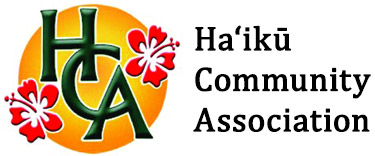What is Turbidity?
Turbidity is a measure of water clarity. Higher turbidity indicates cloudier water due to suspended particles like sediment (for example silt and clay) organic matter, or algae [1].
In freshwater streams, turbidity is an important indicator of water quality, because high levels can affect aquatic life and indicate potential contamination from sediment runoff, erosion, or other pollutants that affect human health and recreation.
Factors Affecting Turbidity
Several factors can influence turbidity levels in streams, including:
• Rainfall and Runoff: Heavy rain events can increase erosion, washing soil particles into streams.
• Erosion and Sedimentation: Land-use practices that disturb soil can increase erosion, leading to higher turbidity. Erosion and sedimentation are significant contributors to turbidity. Land-use practices like farming or construction can disturb soil, making it more susceptible to erosion by rain. Feral ungulates (hooved animals) can also affect turbidity by foraging and uprooting plants, contributing to erosion. This eroded soil is then washed into streams, increasing turbidity and potentially harming aquatic life. Additionally, the animal excrement (“doo doo”) can also get washed into streams during heavy rains, which affects turbidity, and contributes to human health effects due to bacteria and parasites washed into streams.
• Algae Blooms: Excessive algae growth can contribute to turbidity.
Turbidity and Stream Health
High turbidity in streams can:
• Reduce sunlight penetration, hindering photosynthesis by aquatic plants that produce oxygen [2].
• Clog fish gills and harm aquatic life [3].
• Carry pollutants like bacteria or heavy metals attached to sediment particles [4].
Turbidity and Public Health
Turbidity itself doesn’t necessarily pose a direct health threat during recreation. However, it can be an indicator of other potential problems:
• Microbial Contamination: High turbidity can sometimes be associated with increased levels of bacteria like E. coli or Enterococcus, which can cause illness [5].
• Reduced Visibility: Cloudy water can make it difficult to see underwater hazards during recreation.
DOH Freshwater Recreation Standards and Turbidity
The Hawaii Department of Health (DOH) does not have specific numerical standards for turbidity in freshwater streams [6]. Their focus is on designated uses for specific water bodies, meaning the allowable turbidity level might vary depending on the stream’s designated uses (e.g., recreation, aquatic life propagation). They recommend consulting with the department for the latest information on a particular waterway [7].
Using Stream Monitoring Data – Safety Considerations
The HCA website provides turbidity data, but it cannot definitively determine a stream’s safety for recreation on a particular day for these reasons:
• Focus on Long-Term Trends: Turbidity can fluctuate due to factors like rainfall events or storm runoff. Long-term monitoring data helps assess overall stream health.
• Combined Factors: Public health risks depend on a combination of factors beyond turbidity, such as bacteria levels or specific pollutants.
Safe Recreational Practices
Always follow best practices for safe recreation in freshwater streams:
• Avoid sources of pollution: Be aware of potential pollution sources like farms or construction activities.
• Practice good hygiene: Wash hands and body thoroughly after contact with stream water.
Staying Informed
The HCA will continue to monitor stream health and keep the community updated through this website and community meetings. For real-time/daily updates on stream safety advisories, visit the HCA website (https://www.haikumaui.org/water-quality-data/).
Turbidity’s Relationship to Other Water Quality Parameters
• Dissolved Oxygen (DO): Reduced sunlight penetration due to high turbidity can decrease DO levels by limiting photosynthesis by aquatic plants.
